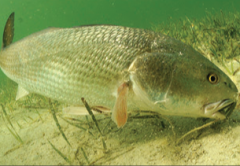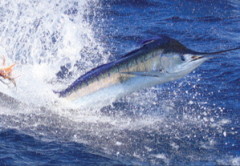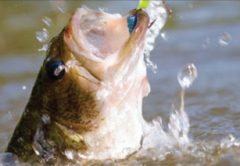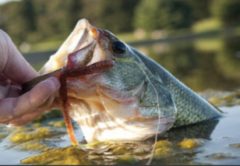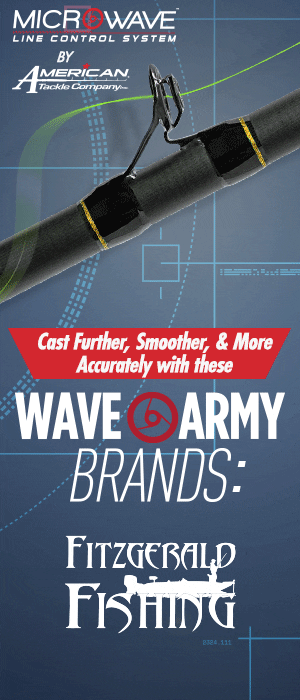Looking back at my childhood days, my fondest memories are the days spent fishing with my father or with his best friend. We often fished the headwaters of the St. John’s River system in Lakes Washington, Winder and Poinsett; I grew up in Melbourne Florida. Jack Everett, my dad’s best friend was the president of the first bass club I joined, and the editor of a Florida based bass magazine called Florida Bass Fisherman. As luck would have it, I caught my first bass over 8 pounds, and Jack was able to talk the owner of the magazine into placing a photo of me on the cover. It didn’t take too long; I became hooked on bass fishing!
I quickly learned how the bass bite changes during the hot dog-days of summer and my tactics for catching them on a regular basis had to change as well. When the calendar moves into the hottest days of the summer months, the bass and their feeding habits change. Bass are cold blooded animals. As water temperatures rise above 80 degrees, the bass’ metabolism slows down. Their willingness to chase or be aggressive is extremely diminished. Since the bass’ feeding habits change, so do the areas and habitat where they live change.
Habitat – Think of habitat as their home, their living room, bedroom, patio, etc. The bass will move from the shallow water flats close to shore vegetation, to the deeper water because the deeper the water, the cooler the temperature. Most of our Central Florida lakes are shallow, bowl-type lakes, meaning they are generally not very deep. Most are no more than fifteen feet deep. The other lake types here are natural spring fed lakes. These lakes will tend to have deeper depths with ledges, humps, deep holes, and many bottom features that will hold large schools of bass. Bass love structure, trees, brush piles (both natural and man-made), ledges, deep grass beds, eel grass, and hydrilla. Getting to know the bottom composition of the lakes you fish will greatly improve your bite ratios and over-all success. With today’s sonar electronics offering 360 degree imaging, side-scanning and multiple options it’s never been easier to learn your favorite lake’s bottom make-up. Today’s professional bass anglers who make their living catching the heaviest five bass stringers often spend several hours a day doing nothing but idling around in their boats just watching for unique bottom contour changes, ledges, holes, underwater points, humps – all sweet spots that hold fish as the outside air temperature rises. Finding these types of structure on the lakes you fish will bring success. Huge tournament bags often come from deep water grass when the fish transition to deeper water.
Shallow bowl-type lakes will be more likely to have schools of bass holding in the deeper water close to feeding areas. Deep water hydrilla and deep eel grass beds along with brush piles are the best places for shallow bowl-type lakes. Bottom structure is more common in the natural spring fed lakes. It is pretty easy finding these with the electronics mentioned earlier. Watch other boats fishing open water in the middle of the lake. When you see a bent rod or someone catching fish, just mark a spot as a reference waypoint and return when the boat leaves to check the bottom on the sonar.
Techniques and Tackle – Types of fishing rods, reels and tackle varies as widely as human behavior. Some folks use spinning tackle, some like conventional bait casing reels and of course some use both depending on techniques and baits. Summer-time baits that produce the most bites also vary based on time of day, water depth, weather conditions, and wind. Timing is the key – early morning before the sun gets up and over-head, or late afternoon through dusk in lower light conditions seem to produce the best bite situations. One of my favorite ways to catch bass is at first light with top water plugs. Fishing on the lake before the sun starts coming over the horizon can produce bites on several different top-water baits. Todays’ plastic frogs and swim baits worked right on the surface or just under the surface make a visible wake. Chugger baits and walk-the-dog spook type baits can provide some awesome bone-jarring strikes. Unless you’ve experienced this, it is hard to explain the rush you get.
Good places to start your day are at the mouths of creeks or rivers where they meet the edges of the lake especially those where current or running water is present. Summer bass will be schooling there feeding on the new shad hatch and if you find schools of bait you can bet the schools of bass won’t be very far away. Lipless crank baits, shallow running crank baits, and small surface plugs can provide some crazy, exciting action. Once the school starts feeding it is common to get a strike or catch a fish on every cast. It is very important to match your bait size to the bait the bass are feeding for best bite results.
As the sun starts to get over head and the morning bite slows down, move to the types of cover or structure mentioned earlier: underwater grass beds, ledges, humps, brush-piles, or holes. Usually these areas are the deeper haunts that the bass will move to, usually close to the areas where they were schooling and feeding earlier in the day. Slowing down your presentation will help with later day success. Baits like Carolina rigs with a six to eight inch worm or lizard and a weight large enough to keep in contact with the bottom. Weight size will vary depending on depth and wind. Deeper running crank baits, large swim baits and jigging spoons for very deep water will produce big bites. Sometimes schooling bass will get fired up once several fish are caught. They compete to get to the baits first. This is common when fishing large billed deep running crank baits. It is not uncommon to catch one on every cast once a school of hungry bass starts a feeding frenzy.
While I’m not a great fan of night fishing it can produce some of the largest bass of the summer months for those willing to fight the mosquitos, insects and lack of natural light. The best times of the month to night fish will be on or around the full or new moon phases. The bites on top water plugs like the old stand-by and famous Jitter-Bug or slow rolled plastic frogs can produce exciting strikes.
With the dog days of summer upon us, the water temperatures are already into the low-90’s. Get out fishing and target bass in transition. Locate fishy habitat. Change your technique and tackle when the sun rises overhead. Watch out for fast moving afternoon storms, and be safe!



